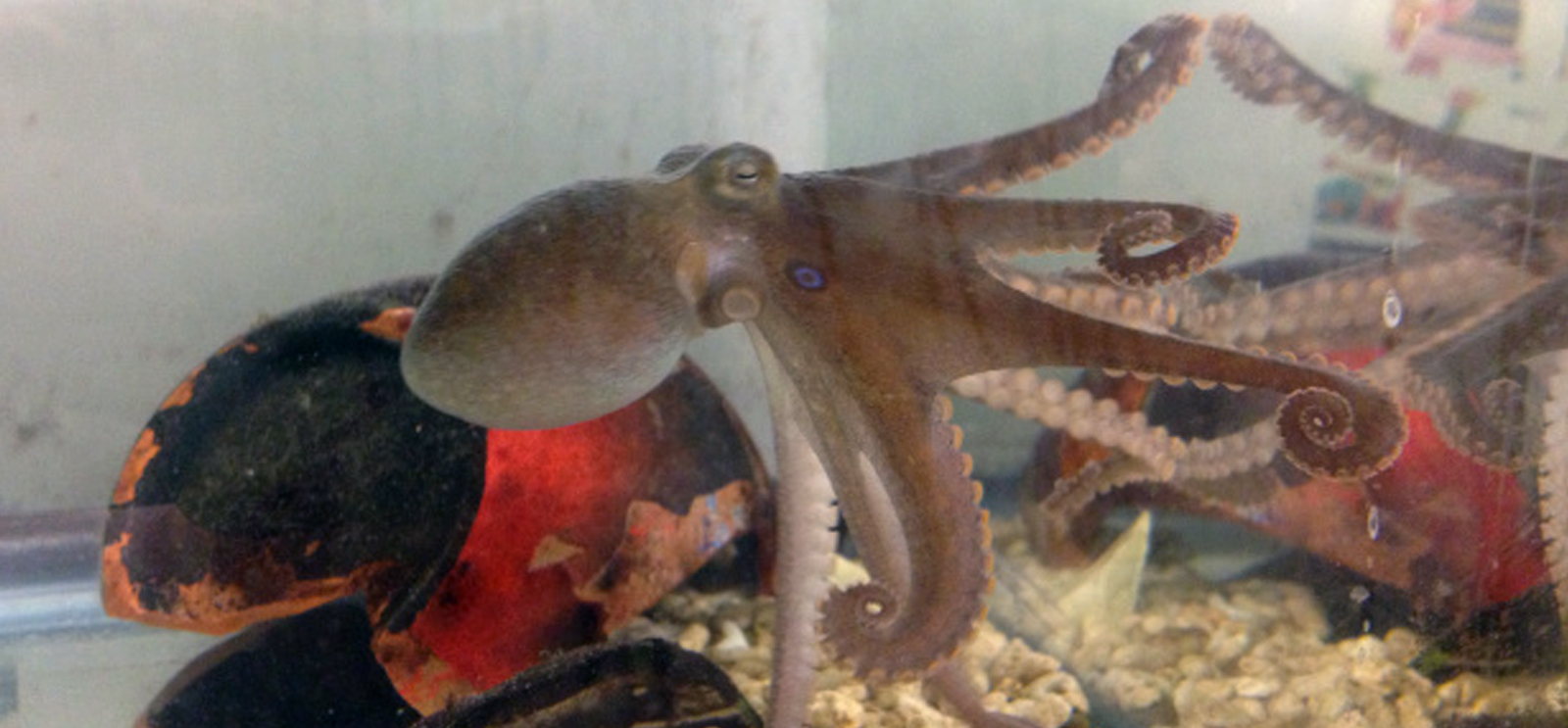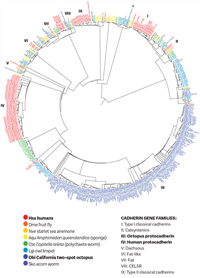
Octopus bimaculoides. (Photo courtesy Science Life blog)
As a researcher, Caroline Albertin, SM’12, a PhD student in organismal biology and anatomy, has always been partial to weird animals: mussels, centipedes, cave fish—and cephalopods.
On a 2009 campus visit as a prospective student, Caroline Albertin got a tour of UChicago’s octopus facility from neurobiologist Clifton Ragsdale. Usually the aquariums are full of animals, but that day there was just one little egg. “And as we’re peering over it, watching,” she recalls, “suddenly it hatches out, changes color, inks, and swims away.” She’s been an octopus researcher ever since.
Albertin and Ragsdale were part of a team that recently sequenced, for the first time, an octopus genome: the California two-spot octopus, Octopus bimaculoides. Albertin was lead author on the study, published August 13 in Nature, which sought a better understanding of the genetic and molecular mechanisms underlying traits specific to cephalopods, a 500-million-year-old class of predatory mollusks that includes octopuses, cuttlefish, and squids. She was especially interested in how the animals developed their large and complex brains. With the equivalent of a spinal cord running down each of their eight arms, octopuses are highly intelligent; they demonstrate a strong ability to learn and to solve problems.
Among the study’s findings was an unexpected abundance of a family of genes called protocadherins, which until recently were thought to exist only in vertebrates. “Cadherins are cell adhesion molecules,” Albertin says. “They stick out from a cell and allow that cell to glue itself to other cells that have a cadherin domain sticking out too.” Protocadherins—a subfamily—regulate neuronal development. “They’re expressed during the early development of the brain,” says Albertin. “It’s thought that they act as little signposts important in setting up the wiring” by determining which neurons should stick together. The octopus genome contains a whopping 168 protocadherin genes, vastly outnumbering those in other animals’ genomes. Humans, for example, only have around 60 protocadherins.
This phylogenetic tree of cadherin genes is separated by type (the protocadherins are at the bottom half of the circle, labeled III) and color-coded by animal. The brackets inside the circle show taxonomic connections between individual genes. Looking further, the researchers found that the octopus’s protocadherins were most expressed in neural tissues. “Exactly what role they’re playing—we have a lot of work to do to find out,” Albertin says. “But we speculate that this is part of the molecular bar code for setting up the cephalopod nervous system, and that this is why they have big brains.”

